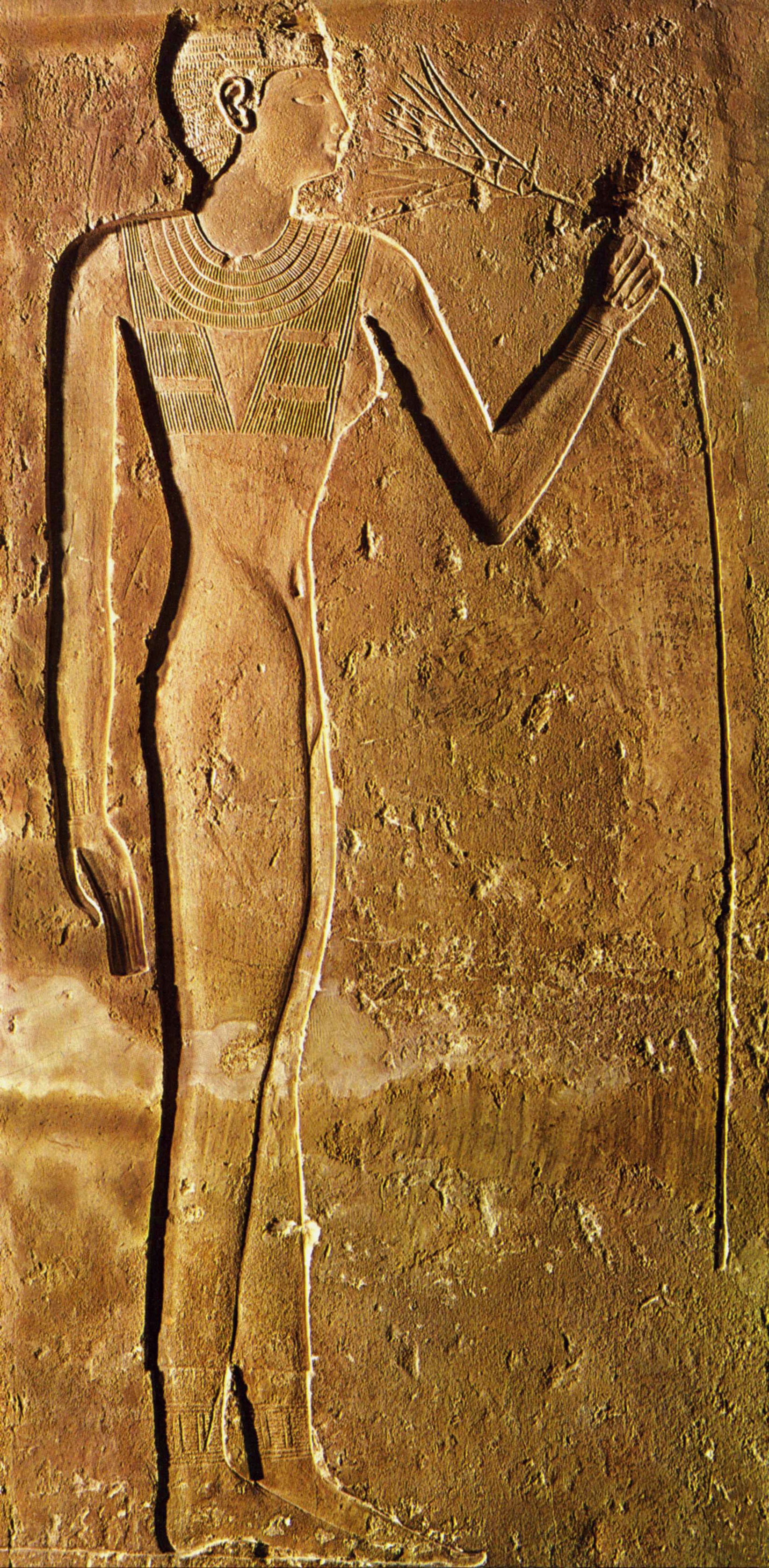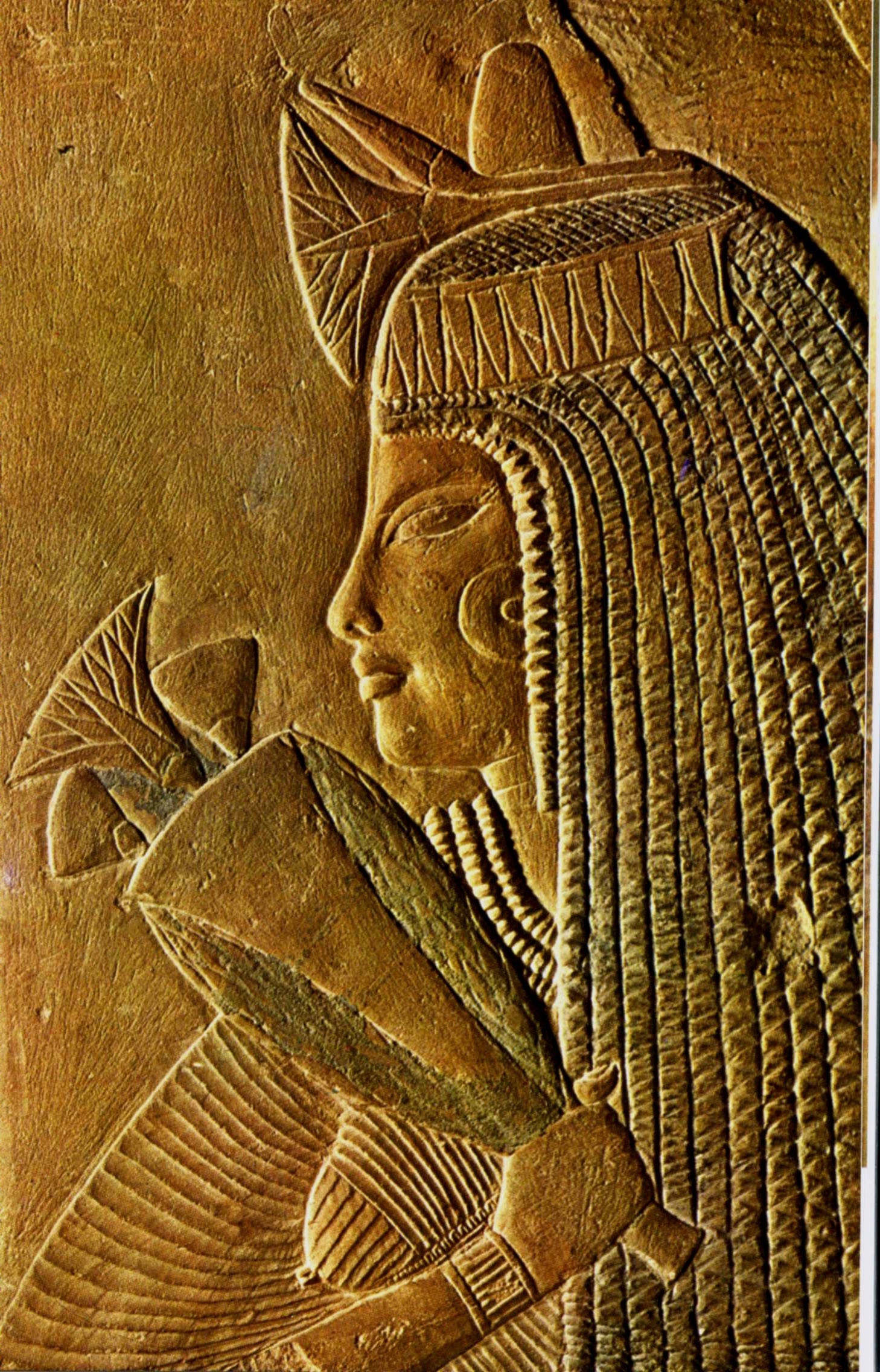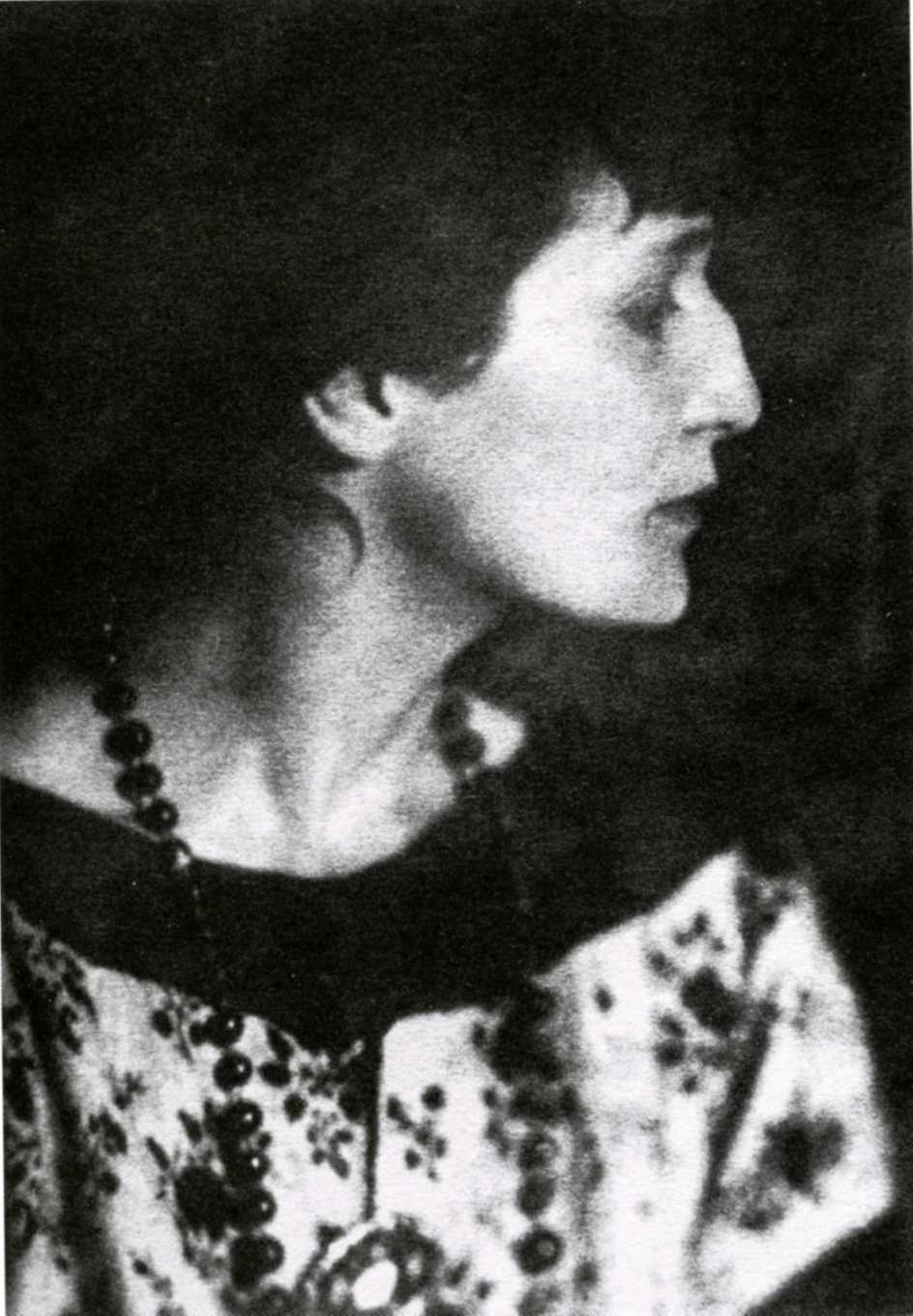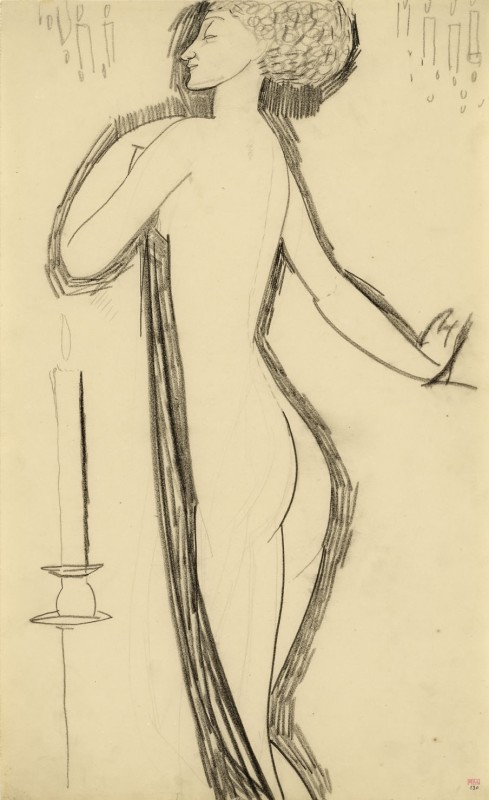Only with the publication of Noël Alexandre's The Unknown Modigliani has the all-important presence in Modigliani's art of the great Russian poet Anna Akhmatova, began to be recognized and understood.
Akhmatova's poetic genius; charismatic beauty and elongated, sensual body struck a unique chord with Modigliani; and influenced the course of his art at a critical juncture in his development. It seems very likely that she inspired this drawing.
The head and stylised posture - also the motionless movement of this figure reflect the ancient Egyptian female figures that so captivated Modigliani, among them those in the Louvre [see above reliefs].
In her memoirs, Akhmatova describes Modigliani's passion for Egyptian art*:
He used to rave about Egypt, At the Louvre he showed me the Egyptian collection and told me there was no point I see anything else 'tout le reste'. He drew my head bedecked with the jewellery of Egyptian queens and dancers, and seemed totally overawed by the majesty of Egyptian art.


Modigliani saw in Akhmatova's graceful, mysterious presence and the musical, dancing movement of her nubile body, the very qualities that captivated him in the Egyptian reliefs of dancers and deities he repeatedly took her to see in the Louvre during their brief time together.
She had a dancer's body. As an adolescent she was five foot eleven inches tall, and so lithe and supple that she could easily touch the nape of her neck when she lay prone.
K. Chukosky, Novyi Mir, March 1987.
Valeriya Sreznevskaya, a lifelong friend, remembers Akhmatova as: a sparkling water sprite, an avid wanderer on foot, climbed like a cat, and swam like a fish...Another feature that marked Akhmatova off from the others was her somnambulism, her moon-walking. On moonlit nights, a thin girl could be seen in a white nightdress walking along the roof of their house in her sleep.
The figure portrayed in this drawing seems to accord with the above memories and photo below.
 Anna Akhmatova
Anna Akhmatova
Many of the Egyptian reliefs against which Modigliani studied Akhmatova had been buried with the individuals they commemorated, to comfort and accompany their spirits into the next world. This would have appealed to Modigliani's mystical nature. And accorded with his desire to preserve and celebrate for all time that same timeless, poetic spirit and beauty he saw mirrored in Akhmatova.
The closed eyes and sensual body poised, as though in an erotic trance, above a single, symbolical, lit candle, seem vividly to reflect their intense, transformative friendship.
*See essay for 'Kneeling Blue Caryatid' in which Akhmatova's recollections of Modigliani are extensively quoted.

